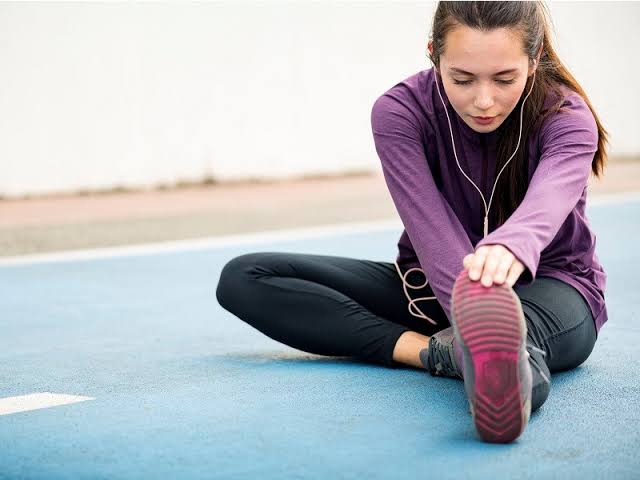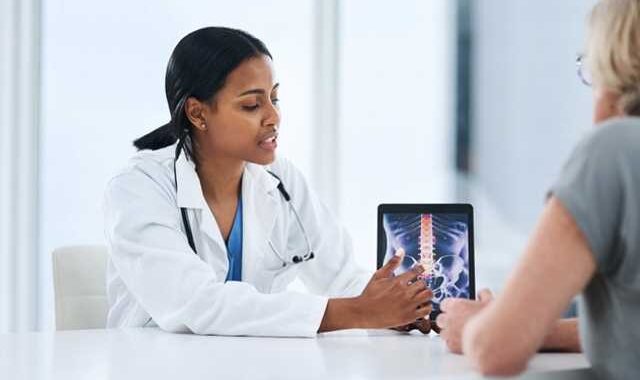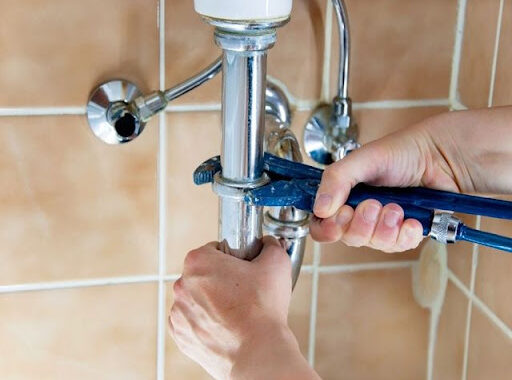
What do you expect when you decide to finally sign up for the gym? And what results have you achieved by regularly practicing fitness or with simulators?
Of course, our goal or already achieved result is to improve our health, weight loss, beautiful figure and muscle tone. Thus, we keep up with the times, realizing that in today’s world without a healthy lifestyle it is impossible to achieve success.
An experienced fitness trainer will tell you what kind of strain and muscle groups you need to tighten your stomach, straighten your back, reduce the volume of your hips or waist. But did you know that physical exercises can be used to correct not only your body shape, but also to treat diseases?
And also to prevent, to carry out prevention from those illnesses to which the human body is “inclined” by virtue of the genetic heritage, a way of life or expenses of a trade? The science about the person goes forward by seven-mile steps.
From traditional medical and surgical treatment, we are successfully moving on to the treatment of proper nutrition, and now to proper exercise. For example, using/excluding certain products from the menu helps to cure such complex ailments as diabetes mellitus, diseases of cardiovascular, digestive and other body systems.
In the same way, physical activity, especially specially selected exercises, improves the condition of internal organs, the functioning of the musculoskeletal system, as well as the hormonal background, which is very important for the body. Influencing absolutely all the processes taking place inside the person at the chemical level.
So, what happens to our body during physical activity? First of all, it “includes turns” our endocrine system, which includes a huge number of cells of endocrine glands, which are located in almost all organs and systems of man.
Today we know more than a hundred and fifty organic bioactive substances that are produced in these cells, and which by their properties have been combined under the definition of hormones. The amount of hormones produced during exercise can correct many processes occurring in the human body.
So, about hormones. What is their role in the body? Hormones get into the bloodstream and, in addition to their individual tasks, all together they perform the function of self-regulation of the body. That is, they help this system open to the whole world to maintain its integrity, internal stability, as well as the vitality of all organs and systems.
How do hormones do this job? Simply put, they respond (actively) to any internal or external influences. And at the same time, in their turn, they influence the “fixed” part of the organism or perform some other task. The most popular example is the adrenaline hormone. Being singled out actively as a result of the stress factor, it helps the body to cope with it, releasing additional energy from fat cells for this struggle.
Such activity of hormones prompts and forces the cells of the body (at the level of chemical reactions) to act correctly in this or that situation. And what is surprising, hormones act in a coordinated way as a group of trained rescuers. Therefore, hormones are also called “signaling chemicals produced by the cells of the body and affecting the cells of other parts of the body.
Think of hormones as tiny police officers: they send biochemical messages that regulate almost everything – your sexual drive, your ability to burn fat cells, your sleep and mood, and even your ability to give birth.

Given the amount of information they are responsible for, it is easy to understand how these mixed signals in your body can affect your feelings. One of the natural ways to help keep your hormones in balance, and therefore your mental and physical balance, is to load your muscular system, i.e. train.
Of course, exercises should be individually tailored to each individual’s abilities, health, physical fitness and body weight. Depending on the type of exercise, intensity and time of exercise, different hormones are produced during exercise. Let’s consider what hormones are affected by exercise.
One of these hormones is irisin. This is the so-called exercise hormone. It is produced by skeletal muscles during exercise. The body has white fatty tissue, which is used to store and store fat, and brown fatty tissue, which the body uses for thermal regulation. So, irisin helps to turn white fat into brown fat, thus helping us to get rid of extra pounds. It also protects the brain cells from injury and aging.
PE activities have an impact on raising the blood levels of a vital hormone such as thyroxine. It is a thyroid hormone that helps regulate metabolism. The higher the concentration of thyroxine, the faster the calorie burn. Intensive exercise helps to increase the level of this hormone by 30%.
Another hormone I’d like to point out is estradiol. It is a female sex hormone that defines a woman’s ability to conceive and give birth to a child, and is also responsible for the formation of a female figure (waist, hips, breasts, etc.).
It is also called the hormone responsible for the beauty of the woman. In addition, estradiol is responsible for the rate of fat utilization in the body, affects the mood of the woman, her endurance, and has a positive effect on the cardiovascular, bone and muscular systems.
Unfortunately, as menopause approaches, the production of this wonderful hormone decreases. And it is not in vain that doctors recommend women not only to change their diet during menopause, but also to exercise regularly. After all, physical exercise increases the level of estradiol. Women who regularly do sports, even at a deep age look young and attractive.
During training, the production of male hormone testosterone increases as well. However, it is produced in both men and women (in much smaller amounts). In a strong half of humanity testosterone contributes to the formation of secondary sexual characteristics.
And both sexes are responsible for sexual desire, volume and strength of muscles, metabolism. This hormone plays an important role in the redistribution of fat and muscle tissue. It stimulates muscle growth by splitting fats.
Another hormone that enhances the testosterone effect is the growth hormone. In childhood and adolescence, as well as in young people who are still growing, this hormone responds to bone growth. In adults, it helps to reduce subcutaneous fat, accelerate its combustion, and has an impact on metabolism.
The most active growth hormone is secreted by the body during sleep. During the day, our body receives energy from carbohydrates, which come with food. And at night, when there are no carbohydrates, to maintain the vital functions of organs used fat reserves of man. The growth hormone is exactly what helps to break down fats. During exercise, the secretion of growth hormone doubles.
When the body is under stress from physical activity, it is a kind of stressful situation for it. To cope with stress, additional energy is needed. And as we have already said, here comes the adrenaline, which increases the amount of energy.
It increases the heart rate, increases the pressure and excites the nervous system. This creates a sense of euphoria and a desire to do more. But most importantly – the breakdown of fatty tissue ensures weight loss.
Also, with heavy loads in response to stress in our body increases the release of another hormone – cortisol. A large amount of it is not desirable, because it stimulates the production of additional energy through muscle tissue, not fatty tissue. Choosing the right amount of exercise and the right amount of nutrition will help regulate the amount of cortisol released.
And finally, I’d like to mention endorphins, the hormones of pleasure. They increase mood, make our lives more fun and joyful, reduce pain and cure inflammation.
The production of pleasure hormones can be increased not only by including banana, strawberry and chocolate in the diet. But also physical activity. During exercise, the level of endorphins in our body increases by a factor of 5.


 Medical Alert and Smart Home Integration
Medical Alert and Smart Home Integration  Cookies in Online Advertising
Cookies in Online Advertising  Top 5 Plumbing Myths Debunked
Top 5 Plumbing Myths Debunked  Data Storage Reliability and Durability
Data Storage Reliability and Durability